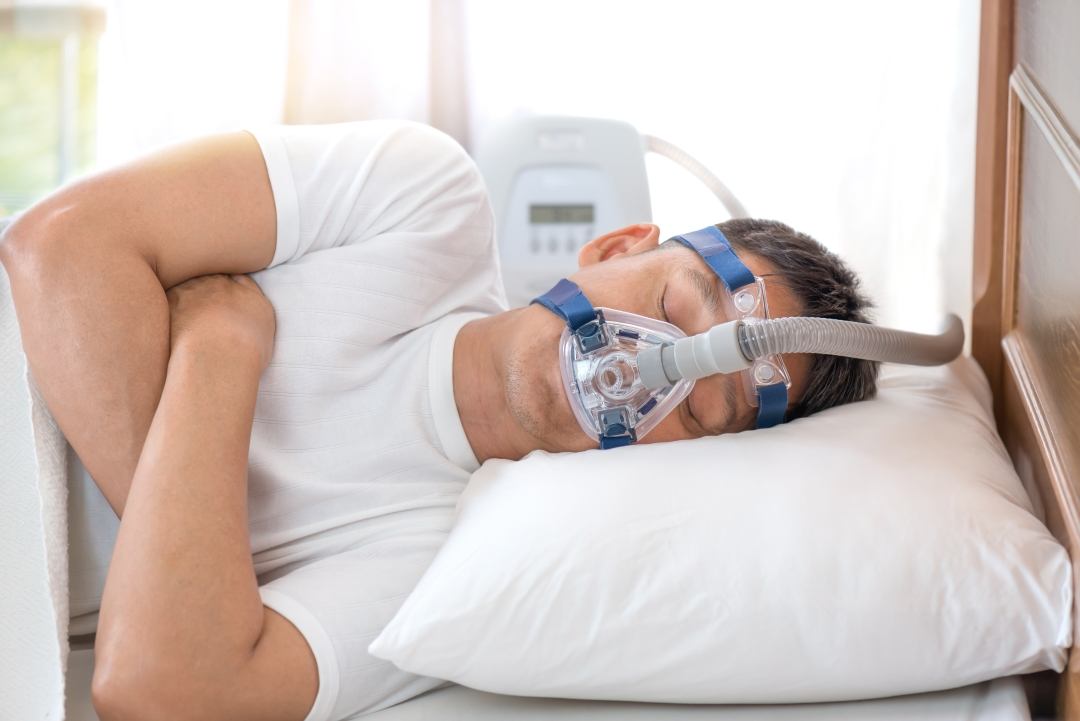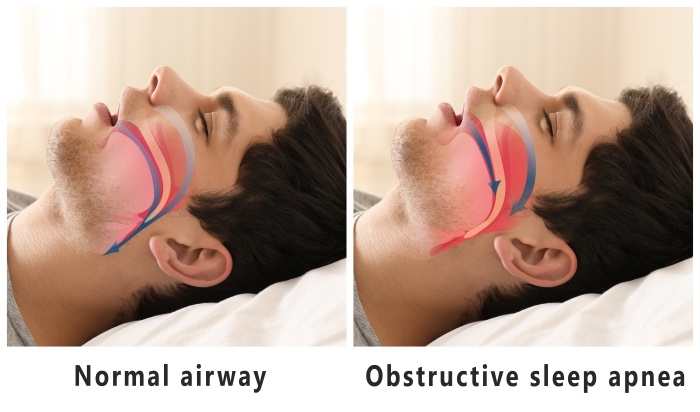This is the first in a multi-part series about obstructive sleep apnea. The next few posts will discuss how I diagnose sleep apnea, nonsurgical treatments, traditional surgical treatments, and newer office-based procedures.
What is Obstructive Sleep Apnea?
Obstructive sleep apnea (OSA) is a serious medical problem that affects millions of Americans. OSA is a disorder in which patients have repetitive events of slowing down or stopping breathing while they are asleep.
When we go to sleep, every muscle in our body relaxes completely. When this happens, the tissues in our throats tend to collapse inward when we breathe in (inspiration) and then expand outward when we breathe out (expiration). For most people, there is plenty of room for air to pass whether they are breathing in or out.
Symptoms of Obstructive Sleep Apnea
However, patients with OSA have more narrow airways, and the collapse of their throat tissues during inspiration causes complete blockage of their breathing. Fortunately, our brains are smart enough to realize that we are not breathing, so OSA patients do not suffocate. What happens instead is that their brain halfway wakes them up over and over during the night to breathe. This causes poor sleep quality, so patients tend to be very tired during the daytime.
Other common symptoms of OSA are morning headaches, fatigue, low energy, depression, difficulty concentrating, problems with short term memory, and restless leg movements during the night.
Treating Obstructive Sleep Apnea
If OSA is not treated, it can put a large amount of strain on the body, especially the heart and lungs, which must fight all night against the airway obstruction. Patients with untreated OSA have much higher rates of deadly illnesses like heart attack, stroke, and Alzheimers disease. OSA is no joke!
How common is obstructive sleep apnea? The prevalence of OSA in America is estimated to be between 3-7% of men and 2-5% of women. It is up to 20% in patients with cardiac disease or with metabolic problems like diabetes.
Check out our new office procedure to treat Sleep Apnea.
Risk Factors for Obstructive Sleep Apnea
The strongest risk factor for OSA is obesity. In general, the heavier someone weighs, the more likely they will have sleep apnea. A second major risk factor is anatomic abnormalities which narrow the airway, including large tonsils, a large tongue, nasal obstruction from a deviated septum or enlarged turbinates, and bony abnormalities (small facial bones). Any anatomic problem from the tip of the nostrils and lips down to the trachea below the vocal cords can potentially contribute to OSA. Most patients have more than one narrow area, but the most common narrow spot is behind the base of tongue (75% of OSA patients).
In children, the large majority of OSA is caused by large tonsils and adenoids blocking the airway. Most children are cured when their tonsils and adenoids are removed. Unfortunately in adults, it is rarely this simple.


